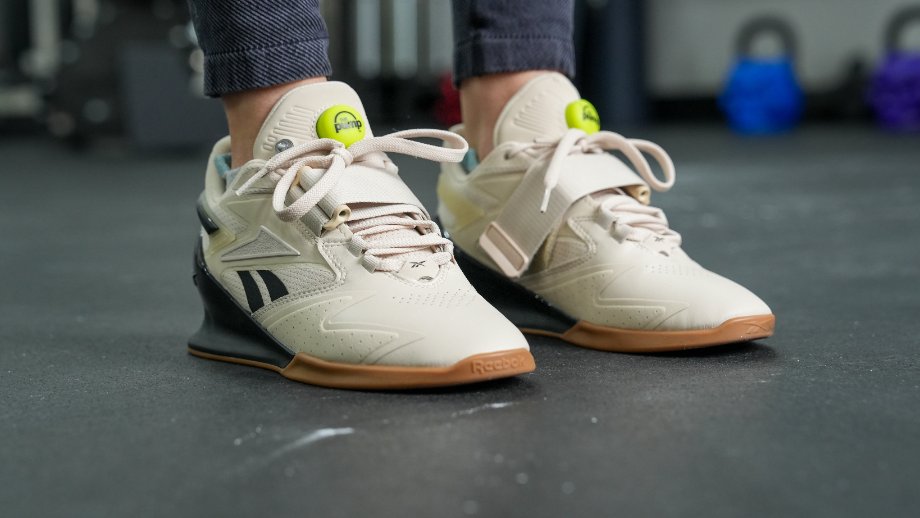We test and review fitness products based on an independent, multi-point methodology. If you use our links to purchase something, we may earn a commission. Read our disclosures.
If you’re a serious lifter, you may already be using a pair of the best weightlifting shoes in your regular training. However, shoe technology is always evolving, and when it’s time to upgrade your weightlifting shoes (or buy your first pair), you’ll want to make sure you’re investing in the right pair.
In this Reebok Legacy Lifter 3 review, I’ll be taking a close look at Reebok’s latest weightlifting shoe. Newly upgraded with the Reebok Pump system, which is a fun throwback to the nineties, these weightlifting shoes may look cool, but are they worth the steep price tag? Let’s find out.
Detailed Shoe Reviews from Seasoned Fitness Professionals
The GGR testers are certified experts when it comes to weightlifting shoes. Our team is made up of personal trainers, CrossFit athletes, weightlifting coaches, and even an Olympian who competes in weightlifting. We’re serious about lifting shoes, and we always share our unbiased opinions.
For this review, Lindsay Scheele, ISSA-CPT, and the face of the Garage Gym Reviews Everything YouTube channel tested the Reebok Legacy Lifter 3s, putting them through a variety of workouts.
To make sure we paid attention to the most important components of a lifting shoe, we’ve scored the Legacy Lifters based on the following criteria:
- Construction and durability
- Stability
- Appearance
- Cushioning
- Outsole
- Overall value
Reebok Legacy Lifter 3
Reebok Legacy Lifter 3
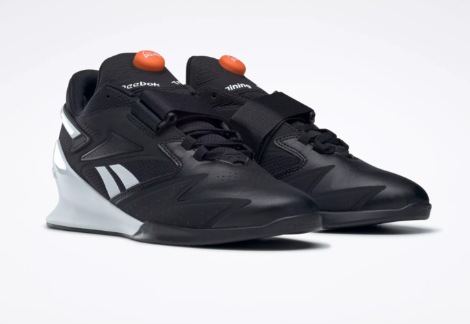
Product Highlights
- 22 mm effective heel height
- Midfoot strap and Reebok Pump keep your foot secured
- Available in multiple colorways for both men and women
- Durable material that’s built to last
- Best for Olympic lifting
- Not ideal for Crossfit or other types of metabolic conditioning training
Pros & Cons
Pros
- Supportive shoe that keeps your foot securely in place
- Durable material that's built to last
- Available in 5 colorways for men and women
- 22 mm heel height designed for Olympic weightlifting
Cons
- The heavy, sturdy design means these shoes aren't great for any kind of cross-training
- Sizing runs small, and you may have to order half a size up
- The cost is higher than similar weightlifting shoes on the market
- Women's colorways are a bit bland
Bottom Line
The Legacy Lifter III is the latest pure weightlifting shoe from Reebok. They have a durable design and 22 mm heel drop designed for weightlifting, with a midfoot strap and Reebok Pump system for added stability.
A Quick Look at the Reebok Legacy Lifter 3
The Legacy Lifter III is the latest pure weightlifting shoe from Reebok. Unlike the Nano X4s, which are meant to be a hybrid shoe for general cross training, the Legacy Lifters are specifically designed for weightlifting.
For those who have never worn a true weightlifting shoe before, you can expect a stable shoe that will anchor your foot to the ground, often with a midfoot strap for extra stability, and an elevated heel to help you squat through a deeper range of motion while maintaining an upright position.
The original Legacy Lifters, which have now been discontinued, were so good that Coop called them the best weightlifting shoe Reebok has ever made. Two generations later, the Legacy Lifter 3s are here, with one of the biggest changes being the addition of the Reebok Pump. Just like the old-school Reeboks in the ‘80s and ‘90s, you can use the built-in pump in the tongue to increase the stability and cushioning.
Finally, it’s worth mentioning that the Reebok Legacy Lifter III is more expensive than other popular weightlifting shoes, so let’s see if they’re worth the extra cost.
Before You Buy
- One of the biggest upgrades from the Legacy Lifter 2 is the Reebok Pump system added to the tongue of the shoe, but our tester and many user reviews felt the pump didn’t do very much for the shoe.
- The Legacy Lifter 3s are pure weightlifting shoes, which means they’re great for any type of movements that involve a deep squat, but not that great for most other types of exercise.
- Even though they’re expensive, the Legacy Lifter 3s are very durable and should last a long time.
Are the Reebok Legacy Lifter 3s Worth It?
At $220, these are some of the most expensive lifting shoes on the market, with competitors like the Nike Romaleos and TYR L-1 Lifters costing around $200, but they’re still cheaper than the Adidas Adipower 3, another popular weightlifting shoe that costs $230 at the time of writing.
For the right lifter, the Legacy Lifter 3s are an excellent option, though some may be better off using a different shoe.
Great for:
- Serious weightlifters who want the maximum support and heel lift for Olympic lifting, squatting, and leg pressing
- Those who want a shoe that’s specifically designed for weightlifting
- Anyone who loved the Legacy Lifter 2 and is ready for an upgrade
Not recommended for:
- Those who want a more versatile shoe that can be used for any kind of workout
- Beginners who may not need such a steep heel lift yet
- Those shopping on a strict budget
Reebok Legacy Lifter 3 Specs
| Price | $220 |
| Effective Heel Height | 22 mm |
| Size Range | Men’s 6.5-14, Women’s 6-12 |
| Upper | Synthetic textile upper |
| Midsole | Lace closure with a midfoot strap |
| Outsole | All-surface rubber outsole |
Wearing the Reebok Legacy Lifter 3
When it comes to weightlifting shoes, you’re mainly going to wear them for movements like squats, Olympic lifts that require a deep range of motion, and squatting-type movements like the leg press or hack squat. The Reebok Legacy Lifter 3 has a 22-millimeter raised heel, which helps you squat lower while keeping your foot secure and your posture upright.
Lindsay wore these shoes for a week and loved them. She used them for snatches, front squats, jerks, and cleans, and felt very secure and stable during every workout.
She did note that they are heavier than cross-training shoes, which means they wouldn’t be a good fit for CrossFit, or other types of conditioning workouts that involve a lot of jumping and change of direction. The high heel lift also means they’re best for high-bar squats and Olympic lifts, not powerlifting or low-bar squats.
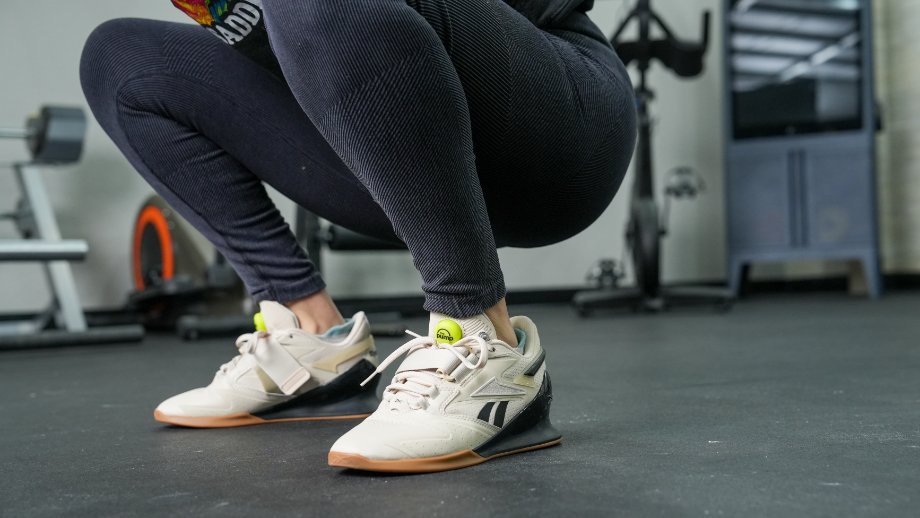
I’ve never worn the Legacy Lifter 3s, but I’ve used other Reebok lifting shoes in the past and can vouch for this. A pure lifting shoe makes your foot feel sort of heavy and stuck to the ground, and really pushes your knees forward. If you’re going to do other exercises in your workout, you may want to bring a backup pair of shoes to change into once you’re done with these.
Lindsay also recommended going up a half size, which she always has to do with Reebok. Some user reviews noted the same thing, saying the Legacy Lifters are a bit narrow, while others had no problem with the sizing. It may be worth finding these in a store to try them on first, or going up half a size if you have wider feet.
Construction, Materials, and Durability
The Reebok Legacy Lifter 3s are very sturdy and built to withstand heavy training. Athletes who would use weightlifting shoes tend to be those who are regularly performing Olympic lifting movements, which are fast and explosives, so a durable build is a must.
The textile upper and lining keep your foot secure with laces, and the TPU heel offers a very firm, stable lift, even under heavy loads.
For construction and durability, Lindsay scored these shoes a 5 out of 5. She said she’s used the Legacy Lifter 2s for over a year with zero signs of wear and tear, and expects the same from the new and improved Legacy Lifter 3s.
Ergonomics
The whole point of a lifting shoe is to provide support and heel elevation, so of course we need to take a close look at the ergonomics, which earned a 4-out-of-5 rating.
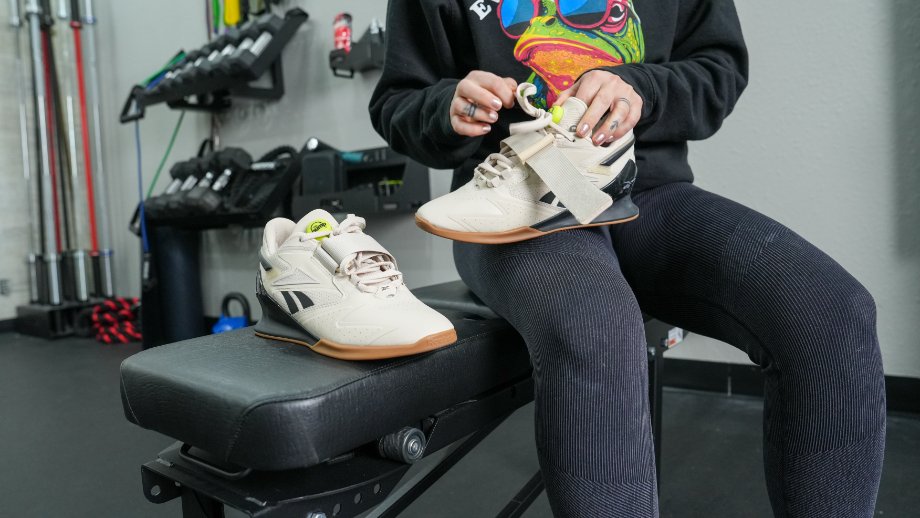
Lindsay said the shoes feel very secure, noting that she felt great as she worked up to 200 pounds on the squat with no issues and felt comfortable thanks to the raised heel with a TPU clip. The toe box also fit her foot very well.
The main upgrade from past versions of Legacy Lifters is the Reebok Pump, which wasn’t seen in previous versions of the Legacy Lifter. However, Lindsay said: “The pump really doesn’t do much; I mean maybe a little added stability, but nothing to really write home about. However, the mid-strap really helps lock my foot into place during different lifts.”
Other reviewers made similar observations, saying they felt very secure thanks to the strap, but the pump feature felt like a gimmick.
The inside is also molded with good arch support. Lindsay said that she finds her arches collapse when using heavier weights, so she loved this support, but others may not like this.
Colorways and Design
Lifting shoes are meant to be functional above all else, but looks still matter. Lindsay gives the women’s colorways a 3-out-of-5 score, and the men’s colorways a 4-out-of-5 score, so we’ll use 3.5 in our scoring table.
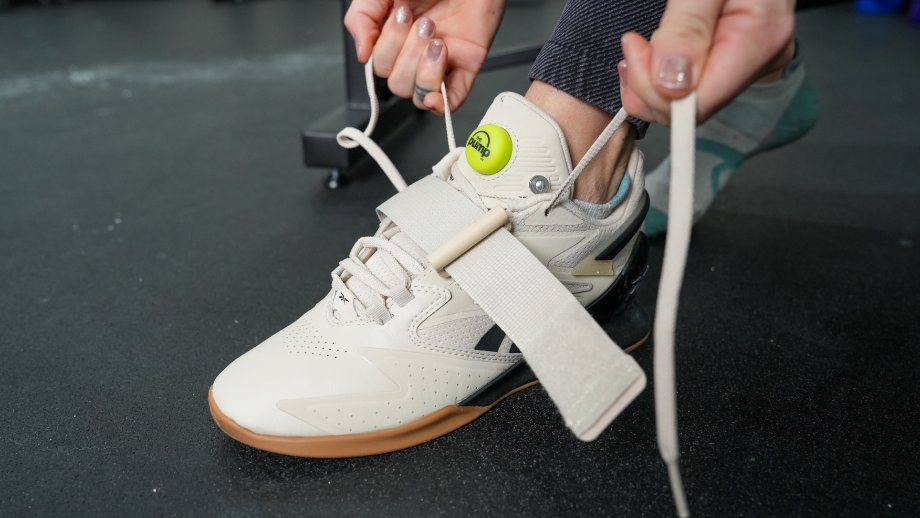
Appearance is always a matter of personal preference, but Lindsay found the women’s colors to be a bit bland and preferred the men’s colorways. I would agree, as the women’s colorways seem a bit muted compared to the bold colorways in the men’s shoes.
For both men and women, there are five different colorways available at the time of writing.
RELATED: Best Gym Shoes for Men
The Legacy Lifter 3 features a single velcro strap in the middle of the shoe to secure your foot, which is common among lifting shoes, though some lifters prefer to have two straps, a feature that makes the Nike Romaleos 4 a popular choice.
Reebok Legacy Lifter 3 vs Nike Romaleos 4
Nike Romaleos 4
Nike Romaleos 4
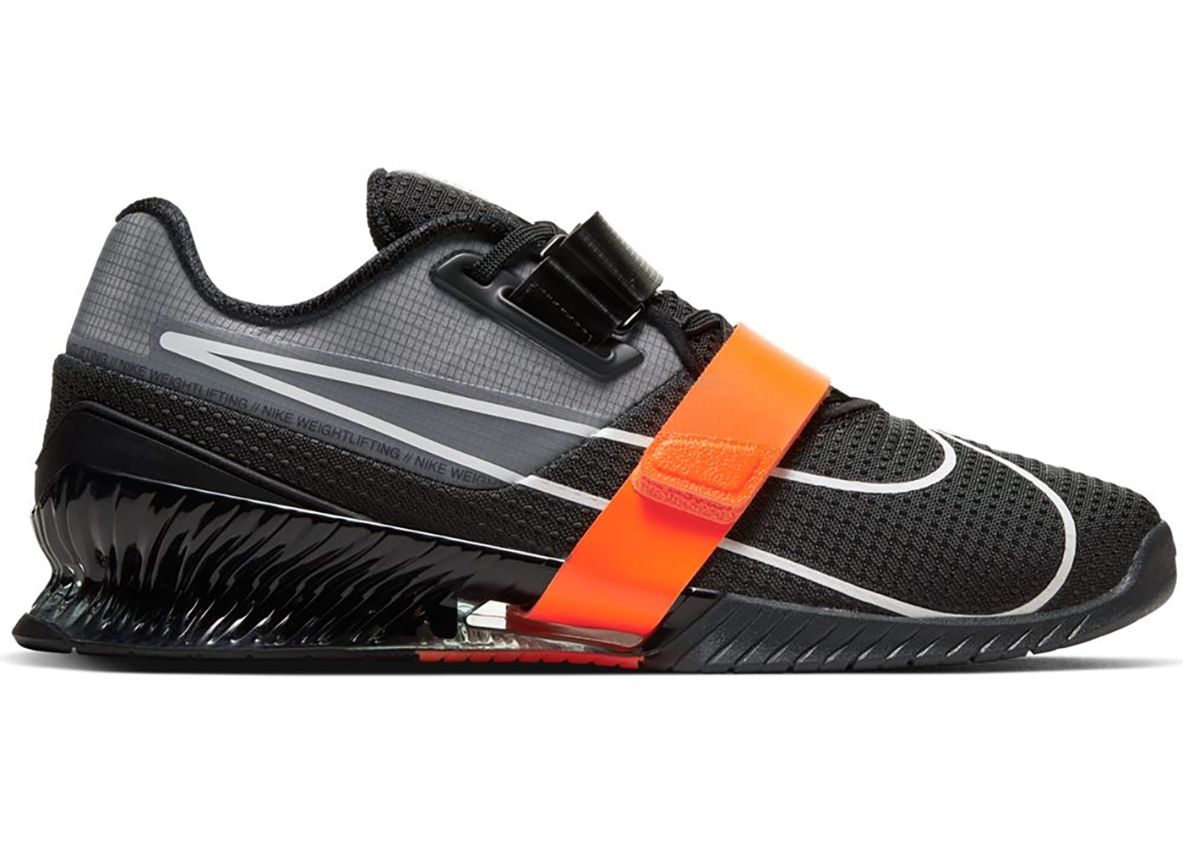
Product Highlights
- Latest iteration in this line of weightlifting shoes
- Blends the breathability of the Romaleos 3 with the sturdy outsole of the Romaleos 2
- 20mm heel drop as well as dual velcro straps
Pros & Cons
Pros
- Incredibly stable platform and midfoot
- Wider toe box than the previous Romaleos
- Heavy and sturdy–I feel like I’m rooted into the ground
Cons
- The laces and straps feel a bit flimsy, but laces can be replaced, and the straps don’t need to do much work if the laces are tied.
- The different materials that are used to make the shoes more breathable also make me wonder how long they will actually last.
- The $200 price will likely limit these shoes to serious athletes.
Bottom Line
The Romaleos 4 were designed to represent the favorable parts of all versions, and I do believe Nike has executed that well. While the price tag of $200 may deter some, this shoe is a great option for those seeking a sturdy, aesthetically pleasing weightlifting shoe.
As Reebok isn’t the only company making high-quality weightlifting shoes, let’s compare the Legacy Lifter 3s to another very popular lifting shoe—the Nike Romaleos 4. GGR founder Coop has personally reviewed and tested these shoes.
While the shoes are similar, the Legacy Lifter 3s have a slightly higher heel lift, and feel a bit more sturdy, although you’re paying extra for the pump. The Nike Romaleos 4 have similar features but use two straps instead of one, and Coop noted that breathable material feels lighter, but may not last as long.
The difference between the two is small, so if you’re not particularly loyal to either brand or design, we’d suggest the Reebok Legacy Lifter 3 to those who want the most durable shoe, and the Nike Romaleos 4 to those who want a more breathable upper and slightly lower cost, or prefer having two straps to secure their foot.
To take a closer look at the Romaleos, check out Coop’s Nike Romaleos 4 Review.
| Reebok Legacy Lifter 3 | Nike Romaleos 4 | |
| Price | $220 | $200 |
| Effective Heel Height | 22 mm | 20 mm |
| Size Range | Men’s 6.5-14, Women’s 6-12 | Men’s 3.5-18, Women’s 5-19.5 |
| Upper | Synthetic textile upper | Woven fabric upper |
| Midsole | Lace closure with a midfoot strap | Lace closure with dual lockdown straps |
| Outsole | All-surface rubber outsole | Rubber outsole |
Customer Experience
Reebok offers a 60-day return policy, although the website says you can only return unworn items with the original tags on. You can try these shoes on to see how the sizing feels, but you won’t be able to test them in the gym.
To initiate a return, you’ll need to contact Reebok’s customer support via phone or chat, and they can issue a return label for you to use.
The 60-day return policy with free shipping is nice, although I wish you could try these shoes in the gym before returning them, so the customer experience scores a 4 out of 5.
Ordering the Reebok Legacy Lifter 3
If you order from Reebok, you’ll receive free shipping on orders over $75, and you can checkout with Klarna to split your order into interest-free payments.
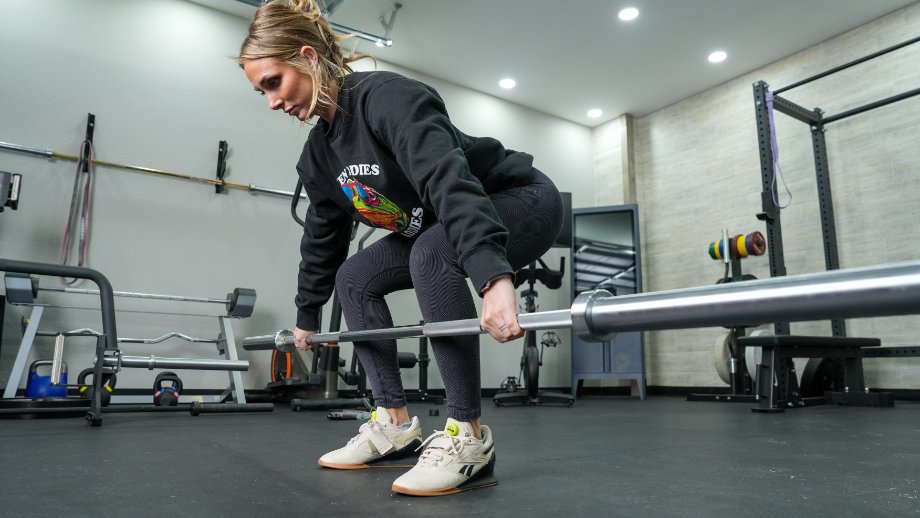
You’ll also want to create a free account with Reebok when you checkout, which allows you to track all of your orders in one place, and receive free shipping, returns, and exchanges.
Customer Reviews
At the time of writing, the Legacy Lifter 3 has 42 reviews on Reebok’s website, with an average rating of 4.4. The shoes are also sold on Rogue’s website, though there are only two reviews—one 5-star review and one 3-star.
The positive reviews say the shoes are very stable and comfortable, though agree with Lindsay that the pump doesn’t serve much of a purpose. A few reviewers said the midfoot strap was too long, and they weren’t able to get the shoe as tight as they would like.
Some reviews said the shoes fit true to size, while others said that you’ll need to size up if you have wide feet.



Final Verdict of Our Reebok Legacy Lifter 3 Review
Overall, the Reebok Legacy Lifter 3 is a very solid lifting shoe, and Lindsay loved nearly everything about them. The shoes cost more than some of the popular competitors on the market, but they’re built to last and are very secure for Olympic weightlifting.
The Reebok Pump feels like a strange addition when you already have the midfoot strap, but it doesn’t get in the way–it simply doesn’t add much to the lifting experience. As a pure weightlifting shoe, the Legacy 3s aren’t quite as versatile as something like the Reebok Nano 4, but they’re built for lifting and will keep your foot anchored to the ground
For those who need a durable pair of weightlifting shoes that should last for quite some time, the Reebok Legacy Lifter 3 is a great choice to use.
Full Rating
Reebok Legacy Lifter 3
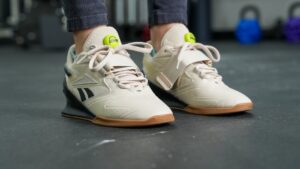
The Legacy Lifter III is the latest pure weightlifting shoe from Reebok. Unlike the Nano X4s, which are meant to be a hybrid shoe for general cross training, the Legacy Lifters are specifically designed for weightlifting.
Product Brand: Reebok
Product Currency: $
Product Price: 220
Product In-Stock: InStock
4.39
Reebok Legacy Lifter 3: FAQs
Are Reebok shoes good for weightlifting?
Yes, Reebok makes fantastic shoes for all kinds of weightlifting, with the newest options being the Legacy Lifter 3 and Nano 4. The Legacy Lifter 3 is best for weight lifting, while the Nano 4 is a more versatile cross-training shoe that’s good for a variety of workout styles.
Are lifter shoes worth it?
Depending on how often you do Olympic lifts or high-bar squats, weightlifting shoes may be a great investment. Lifting shoes help you maintain an upright posture while you squat, thanks to the heel lift. If you don’t perform Olympic lifts or don’t enjoy the raised heel, you may not need a lifting shoe.
What is the best weightlifting shoe?
The best weightlifting shoe is one that fits your goals and preferences. The Reebok Legacy Lifter 3 is a great shoe for anyone looking for maximum support, durability, and a heel lift, but they’re not as versatile as a cross-training shoe may be. Other popular options for weightlifting shoes include the Nike Romaleos 4 and TYR L-1 Lifters.
Should you deadlift in weightlifting shoes?
Most lifters should deadlift in flat-soled shoes rather than weightlifting shoes. The lifted heel will push your knees forward, and with a deadlift, it will be difficult to maintain the upright shins needed for proper form with this much heel lift.
Further reading

Looking for a heart-pumping, sweat-inducing battle rope workout? We’ve got you covered. Read more

Looking for a full-body workout using just a medicine ball? Build your arms, shoulders, lungs, and lower body with our expert wall ball workout right now! Read more

In our NOBULL apparel reviews, we cover our experience with some newer items from NOBULL in addition to some classic pieces. Read more

This article will outline what you need to know about the egg diet for short-term weight loss. Read more

